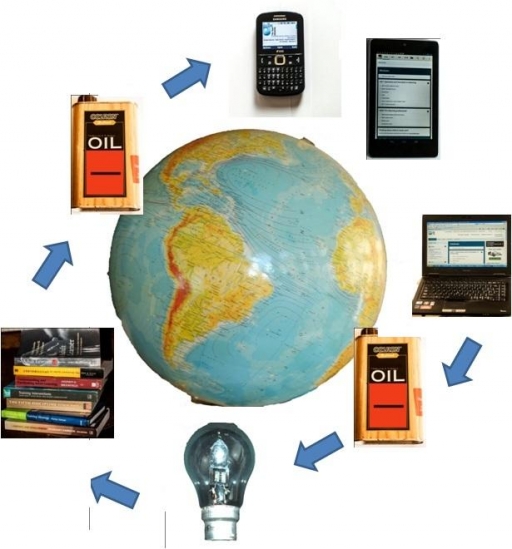Comparing DS106 with Coursera – not quite chalk and cheese
I am pleased I spent time comparing these two MOOC offers before reading Daniel (2012) as he gives a particularly critical perspective on MOOCs that have come from the elite universities and it would have coloured my thinking on Coursera.
An obvious difference between the two is that wherever you look with DS106 you see its key themes – digital story telling and student input/interaction - blasting out at you, whereas Coursera presents an orderly list of courses by subject area – very clearly branded to the institutions where they originate using a catalogue-like structure that tells you whether each course is for you, what you would need to know and what you will have to do.
The use of technology in DS106 is therefore much more obvious and extensive – you are aware of the forums and posts using different kinds of media, also channels like the radio station, immediately. Coursera does use several technologies (see reference to guitar playing below) but the most obvious medium is video.
An obvious difference in pedagogical styles is that fact that most Coursera material seems to be “presented” to the learner by video, whereas DS106 has a range of different channels and is driven by interaction between students and students, students and materials, students and tutors.
Schuwer et al (2013) describe four categories of MOOC:
cMOOCs – network based
xMOOCs – content based
mMOOCS – intermediate between cMOOCs and xMOOCs, combining networking and content platforms
Task-based MOOCs – learners are assigned tasks to complete and share
They identify Coursera as being in the xMOOC category and DS106 as being in the task-based category. There is a risk of taking these distinctions too literally – DS106 clearly has a large networking element for example but my understanding of these categories is that they describe the core approach to teaching.
Kop (2011) lists four activities that enhance learning within the self-directed online experience:
· Aggregation – have lots of resources to work with
· Relation – reflecting and connecting the content to something
· Creation – making meaning by building an output such as a blog entry
· Sharing – giving other learners access to the output
and it is interesting that the MOOCs she researched for this paper showed challenges with the creation activity – large numbers of learners did very little of this. A task-based MOOC might be expected to require a great deal of creation (other than just completion of assignments) and DS106 is testament to how this can work – it is packed with examples of items created by learners and the creation from the course itself has clearly flowed over into further creativity with learners making and sharing videos of their experiences on the course.
Coursera does not exclude this style. There is an introductory course on guitar playing which requires learners to record themselves playing and upload the sound files for example – it could be debated how much creation is involved in this activity but I would describe it as a form of meaning making.
On the one hand, McAuley et al’s (2010) description of how a MOOC works could obtains with either of these two models as there are, they say, no hard and fast rules but equally they are stressing that MOOCs bring together three things - connectivity through social networking, expertise in a particular field and lots of free resources. The xMOOC approach exampled by Coursera is not without connectivity but it appears to emphasise the expertise factor (and the university brand) way over the social networking aspect.
References
Daniel, J. (2012), ‘Making Sense of MOOCs: Musings in a Maze of Myth, Paradox and Possibility www-jime.open.ac.uk/article/2012-18/html (accessed 4th April 2013)
Kop, R. (2011) The Challenges to Connectivist Learning on Open Online Networks: Learning Experiences during a Massive Open Online Course. The International Review of Research in Open and Distance Learning, Vol 12, No 3 (2011): Special Issue - Connectivism: Design and Delivery of Social Networked Learning http://www.irrodl.org/index.php/irrodl/article/view/882/1823 (accessed 4th April 2013)
McAuley, A.; Stewart, B.; Siemens, G.; Cormier, D. (2010). The MOOC Model for Digital Practice. http://www.elearnspace.org/Articles/MOOC_Final.pdf (accessed 4th April 2013)
Schuwer, R., Janssen, B., and van Valkenburg, W. (2013)MOOCs: Trends and Opportunities for
Higher Education in Trend report: open educational Resources 2013 the open educational resources special interest group https://oerknowledgecloud.org/sites/oerknowledgecloud.org/files/Trend%20Report%20OER%202013_EN_DEF%2007032013%20(LR).pdf (accessed 8th April 2013)
